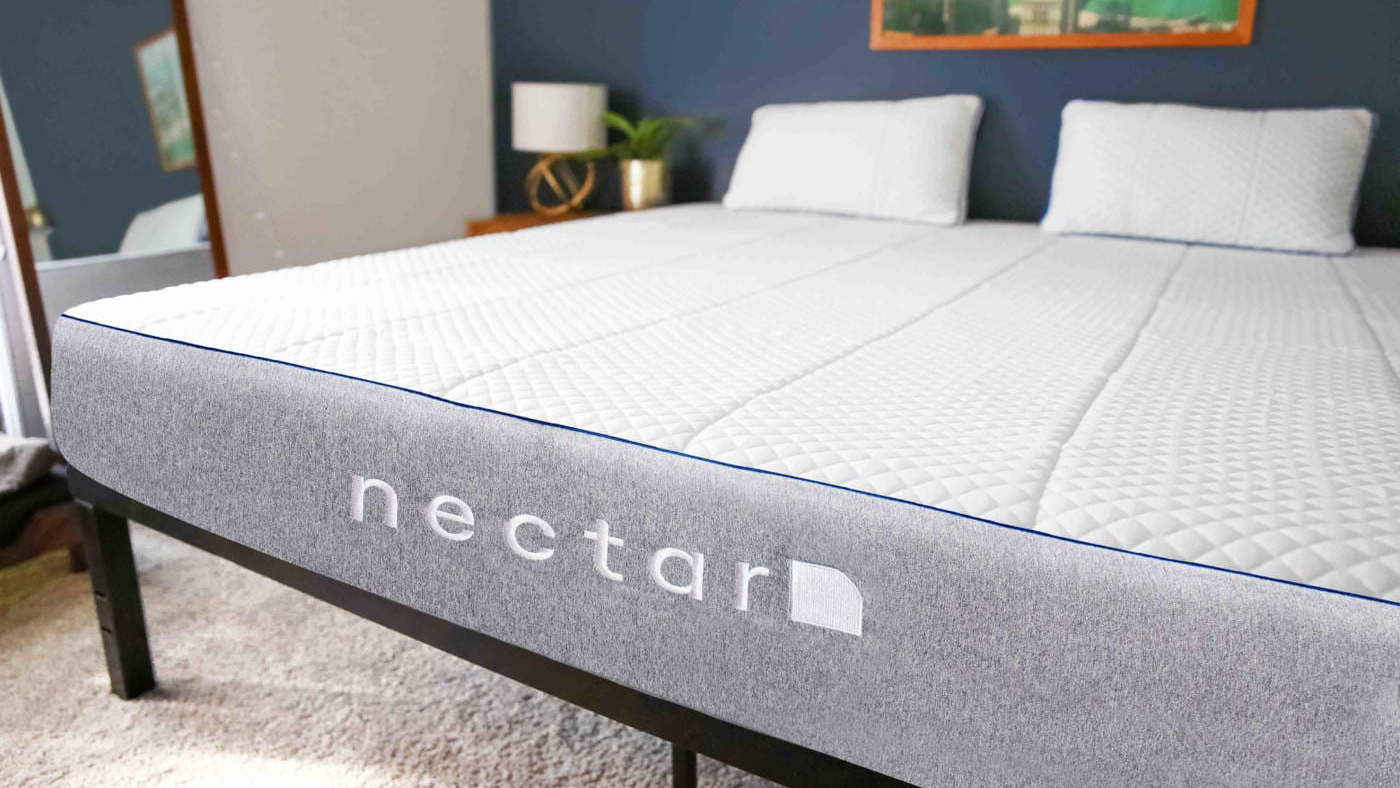Best mattresses of 2019
What price a good night’s sleep? A premium mattress need no longer break the bank

To say the mattress industry has transformed in the last decade is an understatement. Once, buying a new mattress involved a trip to a showroom and a few tentative public bounces. But the boom of the so-called “bed-in-a-box” industry has swept aside the try-before-you-buy approach. Instead, everything is managed online - you browse, you click and it arrives in the post.
These fiercely competitive brands make things as easy as possible. If you don’t get on with your mattress, you can usually return it and get a full refund within a 100-days (a full year, in one brand’s case). They all typically use innovative forms of technology to perfect their products, using everything from memory foam to latex to pocket springs to a mixture of all three.
But with so many contenders - all offering different benefits - the choice can feel overwhelming. That’s why we’ve put each of them to the test, and several sheep-counting sessions later, we’ve rounded up the best.
The Week
Escape your echo chamber. Get the facts behind the news, plus analysis from multiple perspectives.

Sign up for The Week's Free Newsletters
From our morning news briefing to a weekly Good News Newsletter, get the best of The Week delivered directly to your inbox.
From our morning news briefing to a weekly Good News Newsletter, get the best of The Week delivered directly to your inbox.
How to choose the best mattress for you
There’s a rule of thumb that says a mattress needs changing every seven years, but it’s hardly an ironclad rule. You’re better off paying attention to aches, pains, stiffness and other signs you’re not sleeping well.
Construction: Historically, the most popular type of mattress was pocket sprung - where coiled springs are sewn into fabric pockets. More recently, latex and foam mattresses have become more popular, and hybrids, made with a combination of materials, aim for the best of both worlds. Continuous-coil mattresses, made from a single looped wire, and open-coil models, made from single springs fastened with one wire, remain popular budget options (be warned: these rarely stand the test of time).
Firmness: If you sleep on your front or back, you’ll probably prefer a firm mattress, while those who sleep on their sides will benefit from a softer one. If you and your partner have different sleeping habits? You can pick up a “zip and link” mattress, in which two different firmness are married side-by-side.
Cost: the “new generation” are cheaper as manufacturers don’t need to ship to stores or showrooms - and because companies are seeking large numbers of sales at lower margins than their predecessors. However, the very cheapest mattresses may turn out to be a false economy: it’s worth investing in a good sleep.
A free daily email with the biggest news stories of the day – and the best features from TheWeek.com
The best memory foam mattresses
Emma Original

Granted, it’s pricer than a lot of its rivals, but Emma’s Original mattress does have some advantages over all-foam rivals like Leesa and Casper. Firstly, it has a top cover that’s removable and machine-washable. Secondly, it has handles that make it easier to turn and rotate - which you should do with any mattress every three months or so.
And while it’s one of the softer mattresses on the market and best suited for side-sleepers, the Emma Original does provide ample levels of support. Like many foam mattresses, it can feel a little warm, but it does a good job of absorbing any moisture to reduce clamminess.
Emma. £649 for a UK double
Nectar

The Nectar mattress has a unique selling point: it’s the only one on the market that comes with a 365-day trial. That might seem excessive, but mattresses really need a good couple of months of breaking in, so it’s useful to be able to see what works for you in the long term.
It’s also one of the comfiest bed-in-a-box offerings we tried: not as firm as those from Eve and Otty, but a little more supportive Casper. In fact, the Nectar’s middle ground is its central appeal, especially to couples who don’t have wildly varying sleeping positions. Its chief drawback is the lack of a machine-washable cover and handles.
Nectar. £699 for a UK double
Leesa

Leesa is pretty modest in its claims, compared to the hyperbole of other brands. But when it comes to the crunch, the Leesa more than delivers. It has a triple-layer design, each made of a different density of foam: one for airflow, one for pressure relief and one for strength and durability. Neither overly firm or overly soft, it swaddles you as soon as you lie down. Light sleepers can turn over as much as they want during the night, and it’s unlikely they’ll disturb their partner.
The Leesa mattress is also astonishingly durable, and should serve you in good stead for many years. The ethics of the company are admirable too: for every ten mattresses sold, one is donated to charity. As for negatives, the handleless mattress is awkward to turn, and it gets quite warm too.
Leesa. £650 for a UK double
Dormeo Memory Plus Mattress

You may believe you’ve been sent the wrong product when the vacuum-packed Dormeo Memory Plus arrives on your doorstep, such is the compact size of its packaging. The mattress is made up of a foam core with a 30mm top layer of memory foam (which means it can’t be turned over). A tad softer than average, it still provides good spine support, especially for people who are a little smaller.
The Dormeo is best suited for people who sleep on their back, and those who tend to toss and turn in the night. It does get softer over time - but we’re talking years, not months.
Dormeo. £629.99 for a UK double
The best hybrid mattresses
Otty Mattress

The best hybrid mattress we’ve tested, by a distance. It’s at the firmer end of the spectrum, but the Otty’s combination of 2,000 140mm pocket springs and two layers of foam deliver admirable comfort, support and temperature control. But what truly impressed us was the price tag: it’s one of the cheapest bed-in-a-boxers on the market, with a double coming in at less than £600.
Otty. £549.99 for a UK double
Sealy Fusion Hybrid

In search of a softer mattress? The Sealy Fusion Hybrid mattress has more give than rival hybrids, while still offering good levels of support. It also stays cool. Although the quoted price is significantly higher than that of its rivals, it can often be found on sale for about half that amount. The only real drawback is the lack of a free-refund trial period - once it’s with you, it’s yours.
MattressOnline. £1,185.60 for a UK double (often found at 50% off)
Simba Hybrid Mattress

The Simba Hybrid has one key difference from all-foam rivals Leesa and Casper: a layer of 20mm pocket springs. That doesn’t mean you should expect it to feel like a traditional pocket-sprung mattress, as it doesn’t have that bouncy feeling. But it does offer a winning combination of support and comfort.
It does feel a bit warm compared with other mattresses, and you should expect a slightly unpleasant plastic smell after unboxing - but it dissipates after a few days. The mattress will need rotating once a month for the first six months, and once every three to six months after.
Simba. £649 for a UK double
Eve Hybrid Mattress

While the Eve Hybrid has edged up its price since launch - to the tune of about £100 - it remains incredibly good value for money. At 90mm in length, its internal pocket springs are substantially longer than those in the hybrid mattresses by Simba and Dormeo. This results in a mattress with a more traditional feel: more bouncy than the average bed-in-a-box, and without the typical heat-retention.
Eve. £499 for a UK double
The best pocket-sprung mattress
Sealy Nostromo

Another Sealy mattress often discounted by half, the Nostromo delivers such a cloud-like level of support. Its stability means restless sleepers are unlikely to disturb any other occupants, and even after years of use it doesn’t sag. It’s suitable for all sleeping styles and most body types, too - although if you’re particularly tall or heavy, you might find it a tad soft.
The Nostromo has a latex layer that runs over the pocket-sprung core, which means you’re best rotating rather than turning it. One benefit of the design is the breathability of its materials, which keeps night-time clamminess to a minimum.
MattressOnline. £1,216.80 for a UK double (often found at 50% off)
The best latex core mattress
Dunlopillo Royal Sovereign

For those who sleep on their backs - which offers benefits for both the neck and spine - the Dunlopillo Royal Sovereign is the ideal choice. With its all-latex core, it’s both comfy and supportive - perhaps a little softer than average, but suitable for people of all heights and weights.
Unfortunately, it won’t do much to shield you from a fidgety partner - and at a hefty 40kg, you’ll wish it had handles when it comes to pulling it up the stairs and into place.
MattressOnline. £1,989.00 for a UK double (often discounted)
The best budget mattress
Ikea Morgedal

Given the simplicity of its design - a single slab of foam - it’s tempting to write this one off. But the Morgedal delivers a fabulous level of support. It’s totally sag-free and should serve you faithfully through years of slumber. The one caveat is that it’s among the firmest mattress on the list - but if that is to your taste this model would be a bargain at twice the price. While Ikea do offer a medium-firm version of the Mordegal, it is not recommended - it offers far less support and retains a lot more heat.
Ikea. £179 for a UK double
-
 Friendship: 'bromance' comedy starring Paul Rudd and Tim Robinson
Friendship: 'bromance' comedy starring Paul Rudd and Tim RobinsonThe Week Recommends 'Lampooning and embracing' middle-aged male loneliness, this film is 'enjoyable and funny'
-
 The Count of Monte Cristo review: 'indecently spectacular' adaptation
The Count of Monte Cristo review: 'indecently spectacular' adaptationThe Week Recommends Dumas's classic 19th-century novel is once again given new life in this 'fast-moving' film
-
 Death of England: Closing Time review – 'bold, brash reflection on racism'
Death of England: Closing Time review – 'bold, brash reflection on racism'The Week Recommends The final part of this trilogy deftly explores rising political tensions across the country
-
 Sing Sing review: prison drama bursts with 'charm, energy and optimism'
Sing Sing review: prison drama bursts with 'charm, energy and optimism'The Week Recommends Colman Domingo plays a real-life prisoner in a performance likely to be an Oscars shoo-in
-
 Kaos review: comic retelling of Greek mythology starring Jeff Goldblum
Kaos review: comic retelling of Greek mythology starring Jeff GoldblumThe Week Recommends The new series captures audiences as it 'never takes itself too seriously'
-
 Blink Twice review: a 'stylish and savage' black comedy thriller
Blink Twice review: a 'stylish and savage' black comedy thrillerThe Week Recommends Channing Tatum and Naomi Ackie stun in this film on the hedonistic rich directed by Zoë Kravitz
-
 Shifters review: 'beautiful' new romantic comedy offers 'bittersweet tenderness'
Shifters review: 'beautiful' new romantic comedy offers 'bittersweet tenderness'The Week Recommends The 'inventive, emotionally astute writing' leaves audiences gripped throughout
-
 How to do F1: British Grand Prix 2025
How to do F1: British Grand Prix 2025The Week Recommends One of the biggest events of the motorsports calendar is back and better than ever


